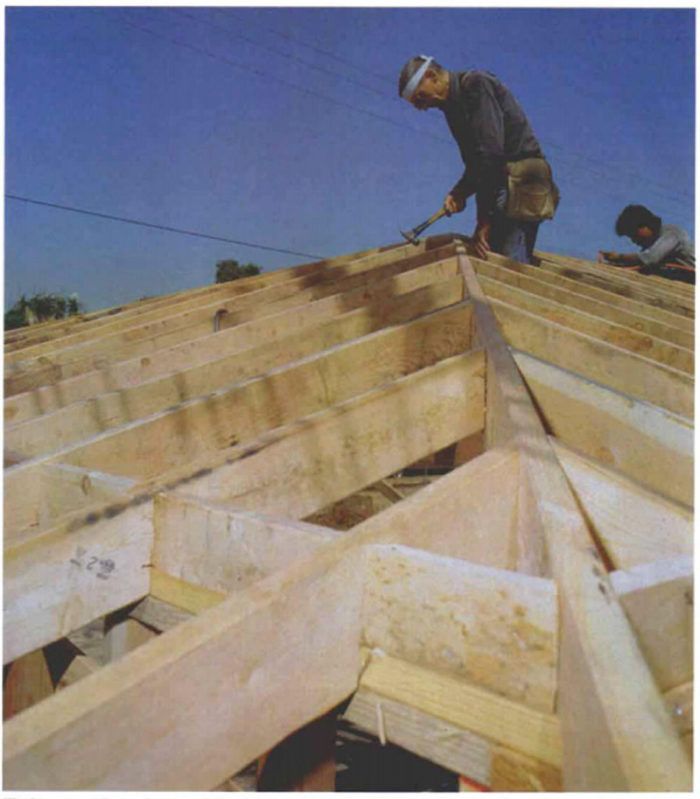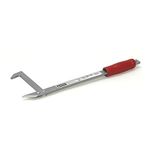Framing a Hip Roof
After you've framed a gable roof, rafter templates and rafter tables are all you'll need to make a hip.

Synopsis: This stronger variation to the more common gable roof can change the whole appearance of a house. In this article, Larry Haun walks through the process of laying out, cutting, and installing hip rafters, showing how basic roof-framing skills can be put to a new use.
I built my first hip roof in 1951 while in the Navy being trained as a carpenter. I dutifully laid out my rafters by stepping them off with a framing square. When I was finished, the commons were fine, but the hips came out short. Ever since then, I’ve relied on a book of rafter tables to determine rafter lengths rather than trust my ability to count steps with a square. Having framed hip roofs for so many years, I’m surprised that so many carpenters seem reluctant to build hip roofs. Maybe they’re afraid that the framing is too complicated or beyond their abilities. I think that once you’ve learned to frame a gable, cutting and building a hip roof requires few additional skills.
A hip roof has the advantage of being inherently stronger than a gable roof. The hip rafters act as braces in the roof to resist the destructive forces of earthquakes, and the roof sloping up from all four sides of a hip roof offers no flat ends to catch high winds. Another advantage to hip roofs is that changing the roof style from gable to hip can transform the appearance of a house, offering a nice variation from the gable roof.
A hip roof begins with common rafters
Hip rafters extend from the corners of the building up to the ridge. On both sides of the hips, common rafters, called king commons, meet the ridge at the same point as the hips. The side and end king commons and the hip rafters are the main framing components of the hip roof.
The end king common runs from the middle of the end wall to the ridge. This rafter is the same pitch as the rest of the roof, and it is the key to the hip roof’s ending with a pitched plane instead of the more common vertical gable. The hip rafters form the line of intersection between the side-roof and end-roof planes. The first step in framing a hip roof is determining the span of the roof, which establishes the location of the king commons. The garage featured in the photos in the PDF below is 18 ft. 6 in. wide. The end king common, which is at the exact center of the span, is 9 ft. 3 in. from the outside of the garage. This number also represents the run of the rafters. After marking the location of the end king commons, I measure down the sides of the building the same distance, and then I mark the position of the side king commons. Next I lay out the rafter locations on the double-wall plates.
Rafter templates streamline measurement and layout
The roof of our garage has a 4-in-12 pitch, which means that the common rafters rise 4 in. vertically for every 12 in. they run horizontally. Because hip rafters run at a 45° angle to their neighboring commons in plan view, hip rafters must run 17 in. for every 4 in. of rise. (By the way, 17 in. is the hypotenuse of a right triangle with 12-in, legs.)
When cutting rafters for any type of roof, especially a hip roof, rafter templates are a great way to speed the layout process. These neat little site built aids have the rafter plumb cut on one end and the bird’s mouth layout on the other. For this project I will need templates with pitches of 4-in-12 for the common rafters and 4-in-17 for the hips.
For more photos and information about framing a hip roof, click the View PDF button below.
Fine Homebuilding Recommended Products
Fine Homebuilding receives a commission for items purchased through links on this site, including Amazon Associates and other affiliate advertising programs.

Stabila Classic Level Set

Guardian Fall Protection Pee Vee

Fall Protection


























